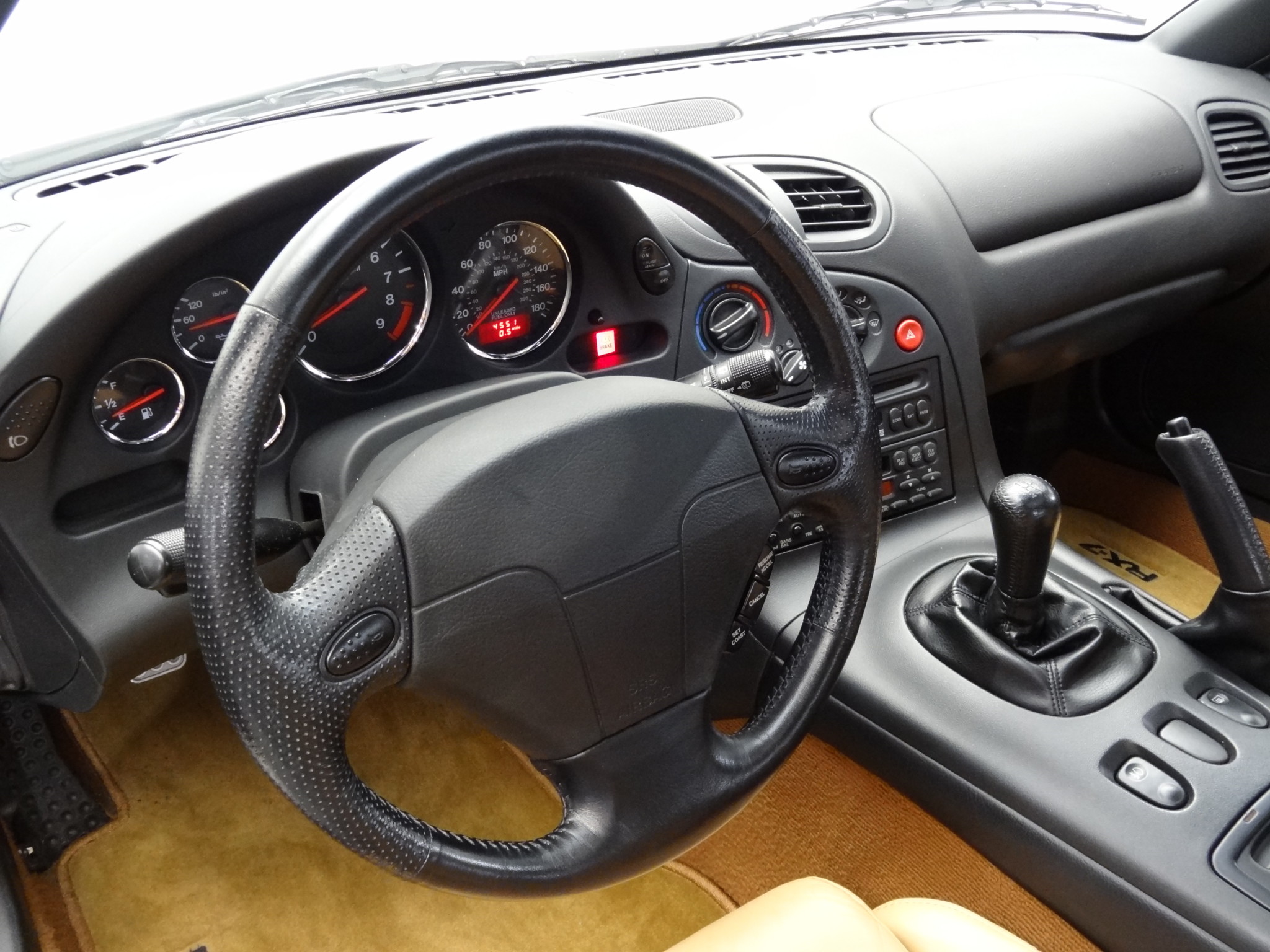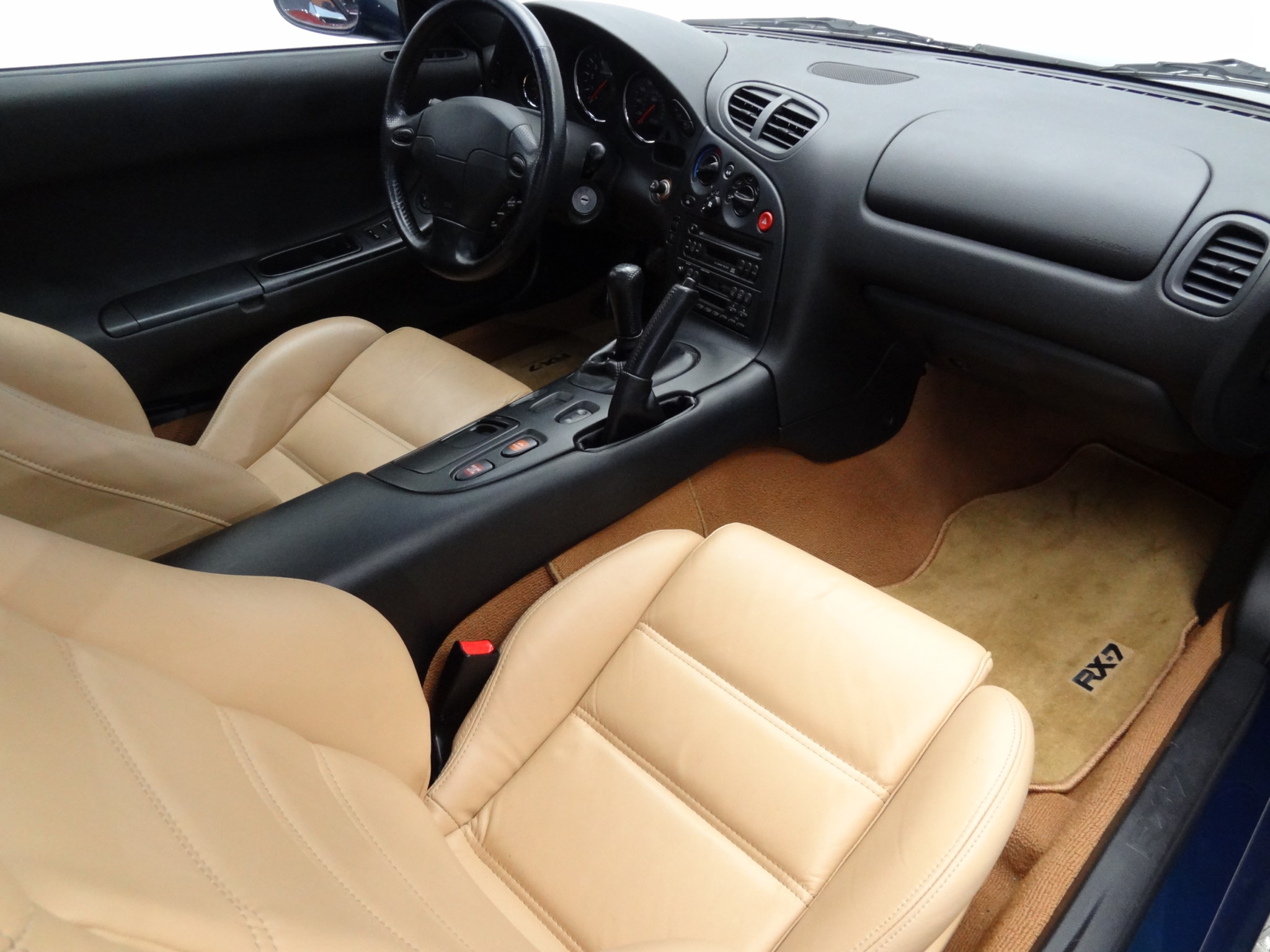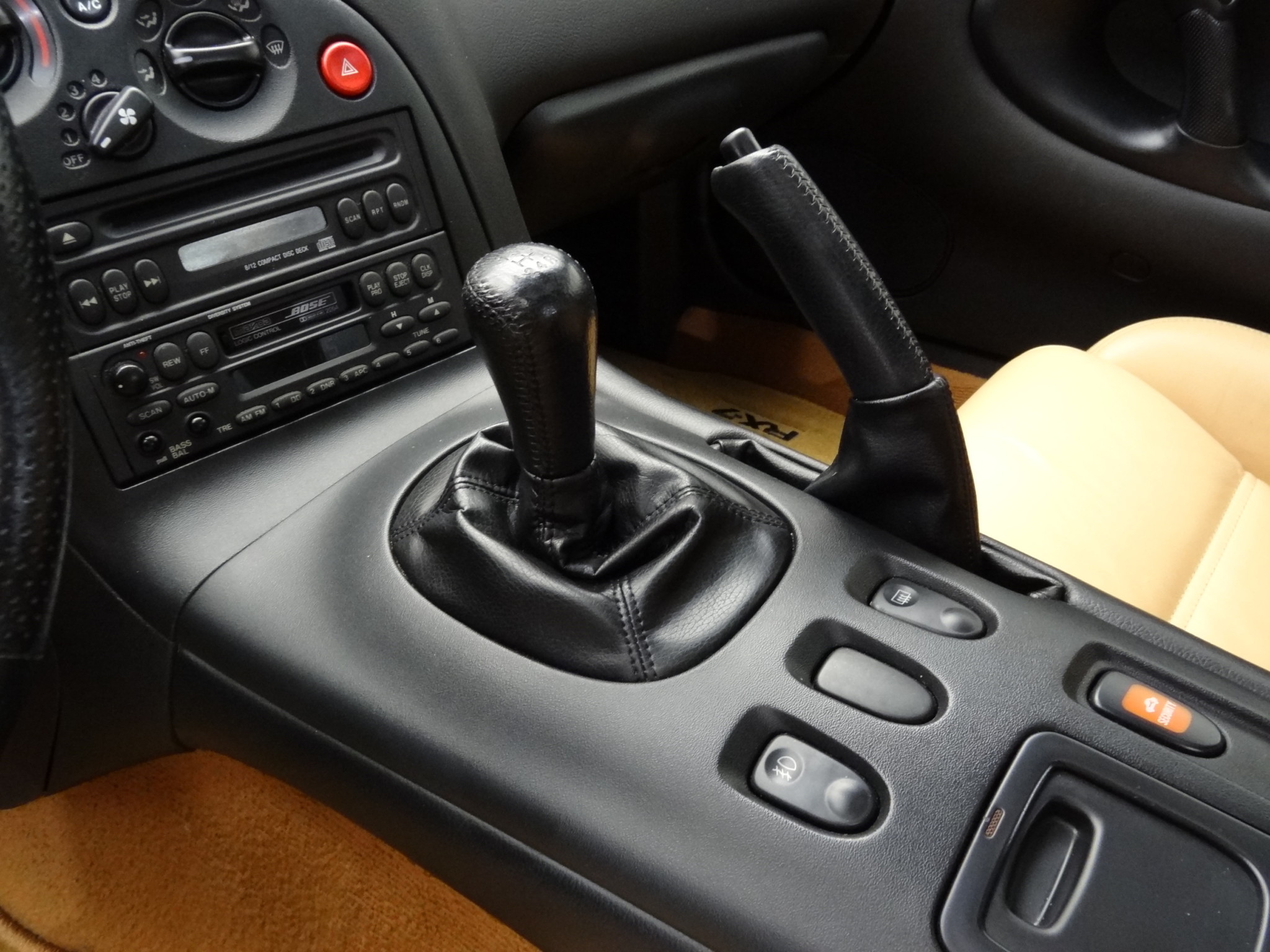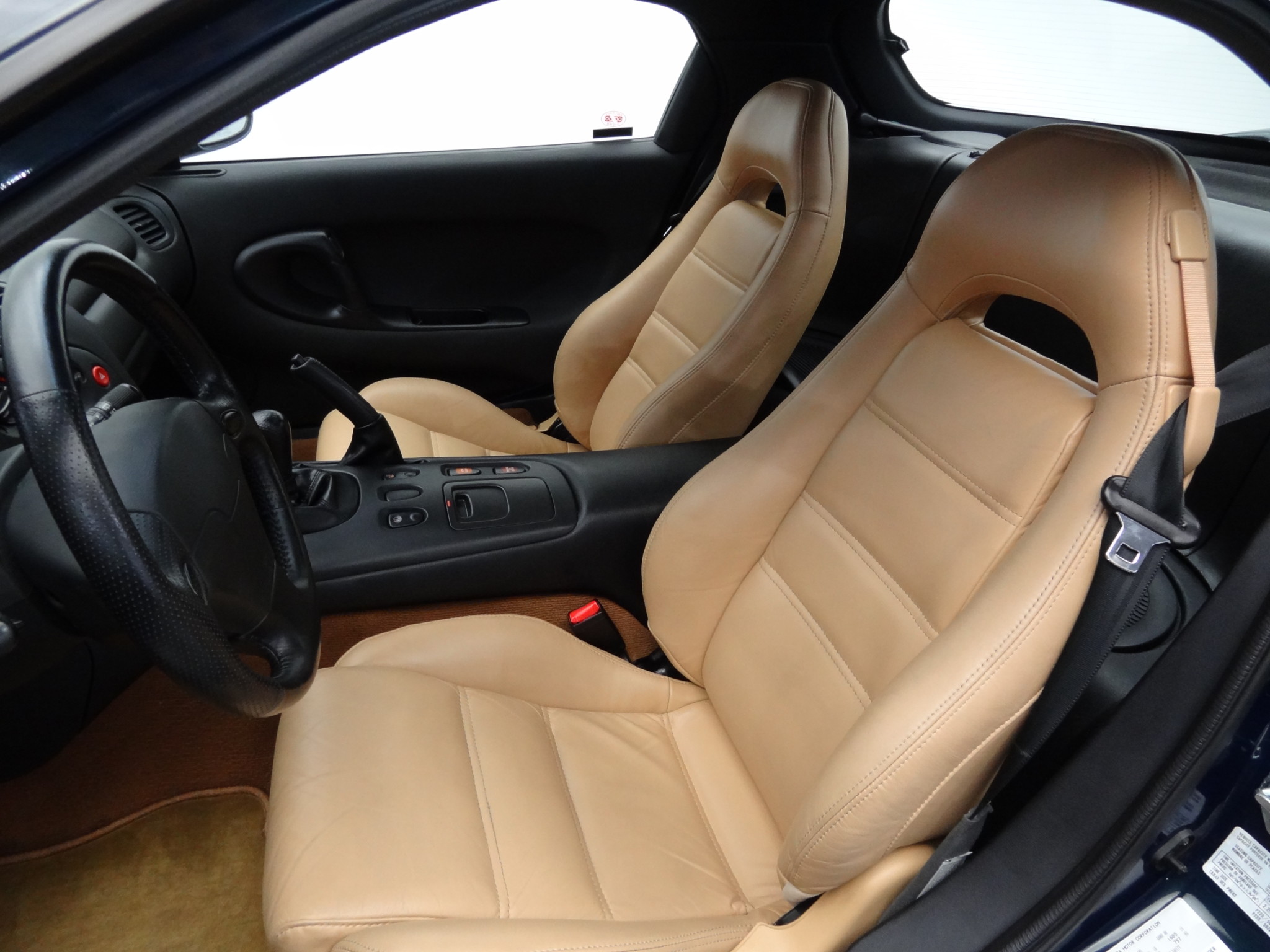This gorgeous 1994 Mazda RX-7 FD Touring just sold for $70,000, setting new record
A gorgeously blue third-generation (FD) 1994 Mazda RX-7 Touring just sold for $70,000 on Bring a Trailer, which breaks the record for the highest result from a public sale for the FD. It blew past the red 1993 RX-7 that RM Sotheby’s sold last month, for $50,400, by nearly 40 percent.
The Montego Blue Metallic beauty has just under 4600 miles and presents showroom fresh in the photos. With any luck, it won’t live the rest of its life as a museum piece and the new owner will enjoy carving up canyons with it as Mazda intended.
When new, this car received the Touring package, which added fog lights, sunroof, and a rear window wiper. The other options include cruise control, air conditioning, and a five-speed manual transmission.




“Finding a cleaner, lower-mileage car would require significant effort,” says Greg Ingold, Hagerty vehicle data specialist. “The FD RX-7 is a favorite amongst rotary enthusiasts, I’m not surprised that the right example in the right color is garnering a world-record price and this degree of attention.”
Mazda’s experimentation with non-piston engines traces roots to the Cosmo Sport in 1967. While the history might be long, the rotary engine design made its largest impact when it was situated in the RX-7 model, which debuted in 1979 and ran through 2002. Broken into three generations, in all forms the RX-7 is beloved for its lightweight, precise handling and styling that broke from the sharp angles favored by many design studios.
The third-generation cars are the coup de grâce of the RX-7 nameplate, and the U.S. was only so lucky as to get the car from 1993–95 imported initially. The small but plucky 1.3-liter engines eschewed pistons for a twin-rotor Wankel design that had character and a high rev ceiling to make up for its lack of torque at low rpm. Sequential turbos helped bring the output numbers to a respectable 255 horsepower and 217 pound-feet of torque.

The elephant in the room of every RX-7 sale is reliability. The rotary engine’s apex seals are roughly equivalent to piston rings and loss of compression means a full rebuild. With a limited number of parts compared to a piston engine (no valves to speak of) the rebuilds are simple but not necessarily cheap.
How this car has survived 25 years without being modified with bigger turbochargers or the ever-popular Chevrolet LS-engine swap is amazing and inspiring. We can only hope the increasing appreciation for these Mazda rotaries will drive more great examples out of hiding and into the wild.






